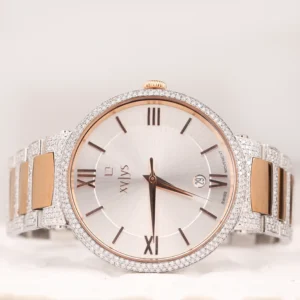In this digital-first world, visuals do more than just show the product. They shape the buying experience. However, regarding product photography, businesses are asking the big question, 360-degree product photography vs traditional shoot – what works better?
While there may be no blanket solutions, understanding what really differentiates the two styles and where each fits best is worth the investment if you are planning to transform the way your products look online.
Let us break it down.
Traditional Product Photography: Reliable Yet Limited
For years the method has been static photography. Take a few pictures-static-from the front, side, and maybe a close-up. Simple, cost-effective, and familiar. Traditional product photography is valid when:
- The product needs only one angle to understand. For example, books and packaged goods.
- Youre in a rush.
- You have a limited budget and need an instant high-speed content.
But static it is. Customers cannot check out the item. In categories like jewelry, electronics, or fashion accessories, that could mean wasted conversion rates.
That is exactly why more and more businesses are now asking 360-degree product photography vs traditional shoots – what works better for engagement and sales?
360° Product Photography: Interactive, Immersive and Upwardbound
Unlike whitish, 360-degree photography gives control as its being rotated by the customer, viewing the product from every angle, and almost experiencing it as if it were being held in the hands.
Here are the reasons why:
- It increases trust by removing uncertainty.
- It reduces returns because the shopper knows exactly what to expect.
- It boosts engagement; interactive visuals keep users on your website longer.
Great sites like Vision JD 360 have made creating rotating visuals as easy as snapping it with an iPhone. The output? Immersive, well-defined images but not needing an entire production crew or expensive hardware.
When comparing 360 product photography versus traditional shoot, this is how youd measure it: one shows a product; the other demonstrates it.
What Consumers Prefer For Todays Consumers
Todays consumers want visualization-astronomy-of-the-product- before they purchase that item. Swipe. Zoom in. Rotate.
So, in this given option, customers would prefer products with the 360-degree view, especially for high-involvement purchases such as jewelry, electronics, or custom goods. It offers confidence. A confident buyer has high chances of converting.
Traditional images have a place, too, especially for thumbnail imagery, lifestyle images, or social posts. Many brands often blend: 360-degree spins on product pages and conventional images for advertisement or e-mail marketing.
360 Degree Product Photography versus Traditional Shoots: So, What Works Better?
If youre still wondering whether 360-degree product photography works better for your needs than traditional shoots, the short answer is: it all depends on your product and customer journeys.
But just in case, you are aiming for:
• More engagement
• Less return
• More trust
Better shopping experience online
Then it is 360 degrees product photography, which would prove to be a better bet in the long run.
Conclusion
The way products are displayed online is changing — and fast. Brands that adapt in this area win the clicks, win the trust and win the conversions.
Therefore, revising websites or generally launching a new collection is actually the moment to check how visuals can turn into getting the sales.
So, if you are ready to get into this and not worry about how to start, then tools like Vision JD 360 are an easy, efficient, and scalable way to professionalize and 360-degree-make your product photography.
Customers will want more than a gaze: lugging it over indeed is justified.
Contact US https://jdphoto360.com
SEE MORE https://jdphoto360.com/blog

